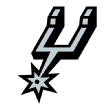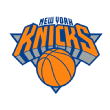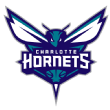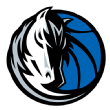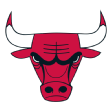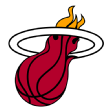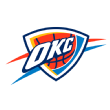There were 17 trades on deadline day Thursday involving 45 different players, many of whom are set to be free agents this summer.
However, just how a slew of extensions signed this past offseason left the 2021 free-agent pool shallow, Thursday's trades could have an equally adverse affect on this summer's deals. For example, Victor Oladipo, who could've been one of the top free-agent targets for the few teams with cap space, could end up simply re-signing with his new team, the Miami Heat.
Moving forward, it's possible the trade market will be the biggest resource for teams looking to upgrade their rosters, thanks to a combination of reduced spending power throughout the league and players like Oladipo potentially being off the board before free agency truly gets started.
Looking ahead to this summer, the teams with the most cap space -- the New York Knicks and San Antonio Spurs -- could take an aggressive approach in free agency, reshaping their rosters while most of the NBA sits on the sidelines.
The free agents
The Class of 2021 was trending toward historic a year ago. It's now average at best.
The drop in grade(s) is a result of LeBron James, Giannis Antetokounmpo, Paul George, Rudy Gobert, Donovan Mitchell, Jayson Tatum, Bam Adebayo and De'Aaron Fox all signing contract extensions in the offseason.
The headliners of the class are Kawhi Leonard, Chris Paul, DeMar DeRozan and Jrue Holiday. Outside of DeRozan, however, those players are likely to remain with their current teams and not entertain offers from teams that have cap space.
The strength of the group is a deep pool of guards consisting of players such as Kyle Lowry, Mike Conley, Spencer Dinwiddie, Dennis Schroder, Lonzo Ball, Victor Oladipo, Gary Trent Jr. and Norman Powell.
Here is a list of the top free agents broken down by their position, age and current salary:
Others: Derrick Rose, Bryn Forbes, Goran Dragic (team), Patty Mills, Elfrid Payton, T.J. McConnell, Frank Ntilikina (restricted), Langston Galloway, Jeff Teague, Reggie Jackson, Brad Wanamaker (restricted), Dennis Smith Jr. (restricted), Cameron Payne, Ish Smith, Raul Neto and Dante Exum.
Others: Ben McLemore, Lou Williams, E'Twaun Moore, Alex Caruso, JJ Redick, Furkan Korkmaz, Alec Burks, Wesley Matthews, Avery Bradley (team), Danny Green, Tony Snell, Javonte Green (restricted), Tyler Johnson, Bruce Brown Jr. (restricted), Malik Monk (restricted), Garrett Temple, Kent Bazemore, Sterling Brown. David Nwaba, Kris Dunn (player), Isaac Bonga (restricted), Edmond Sumner (team), Patrick McCaw and Wayne Ellington
Others: Svi Mykhailiuk (restricted), Timothe Luwawu-Cabarrot, Solomon Hill, Semi Ojeleye, Denzel Valentine, JaKarr Sampson, Torrey Craig, Darius Miller, Justin Jackson (restricted), Terrance Ferguson (restricted), Abdel Nader, Glenn Robinson III, Stanley Johnson, Terence Davis (restricted), Justise Winslow (team option), Maurice Harkless and Rodions Kurucs (team option)
Others: Nicolas Batum, Mike Muscala, Markieff Morris, Andre Iguodala (team), Nemanja Bjelica, P.J. Tucker, Al-Farouq Aminu (player), Luke Kornet, James Johnson, Isaiah Hartenstein (player), Kevon Looney (player), Patrick Patterson, D.J. Wilson (restricted), Georges Niang, Nicolo Melli (restricted), Trevor Ariza, Mike Scott, Harry Giles III, Jabari Parker, Frank Kaminsky and Trey Lyles
Others: Nerlens Noel, Daniel Theis, Boban Marjanovic, Marquese Chriss, DeMarcus Cousins, Meyers Leonard, Nerlens Noel, Hassan Whiteside, Willie Cauley-Stein (team), Khem Birch, Bismack Biyombo, Gorgui Dieng, Willy Hernangomez, Tony Bradley (restricted), Ed Davis, Alex Len, Robin Lopez, JaVale McGee, Cristiano Felicio, Udonis Haslem and Vincent Poirier (restricted)
The teams with cap space
At one time, nearly half of the NBA was projected to have cap space in 2021.
Now, after the COVID-19 pandemic resulted in billions of dollars in lost revenue, the $125 million salary cap that was once projected is now expected to come in at $112 million -- a $13 million reduction per team.
That affects teams such as the Dallas Mavericks, who were projected to have a max salary spot available and are now left with roughly $21 million.
In total, ESPN is projecting four teams to have cap space this offseason.
The number could increase to six if Kyle Lowry (Toronto) and Victor Oladipo (Miami) don't re-sign with their current teams.
Projected room: $51 million
Who returns: Dejounte Murray, Derrick White, Lonnie Walker IV, Keldon Johnson, Jakob Poeltl, Devin Vassell, Luka Samanic, Drew Eubanks, Tre Jones and first-round pick
Who might be gone: DeMar DeRozan, Rudy Gay, Patty Mills and Trey Lyles
Other charges: $1.9 million (incomplete roster charge)
The last time San Antonio had cap space was in 2015 when LaMarcus Aldridge signed a four-year, $84 million contract.
Now, six years later, the Spurs once again will have the opportunity to reshape their roster around their young core with a projected $50M in room.
To create the flexibility, San Antonio would need to renounce the free-agent holds of veterans DeRozan, Gay and Mills.
Projected room: $50 million
Who returns: Julius Randle, RJ Barrett, Obi Toppin, Kevin Knox II, Immanuel Quickley, Mitchell Robinson (team option), first-round pick (own) and first-round pick (via Dallas)
Who might be gone: Derrick Rose, Frank Ntilikina, Alec Burks, Nerlens Noel, Elfrid Payton, Reggie Bullock, Terrance Ferguson and Taj Gibson
Other charges: Joakim Noah ($6.4 million) and incomplete roster charge ($4.6 million)
For a third consecutive offseason, the Knicks are among the leaders in the clubhouse when it comes to cap space with a projected $50 million in room.
However, in previous years there was not a quality product on the court to help convince free agents to come to New York. Now the Knicks have a foundation in place, led by a strong front office, head coach Tom Thibodeau, All-Star Julius Randle and former top-three pick RJ Barrett.
Because this free-agent class is average at best, it would be best if New York played the conservative card (signing players to short-term contracts) and waited until the 2022 offseason to go all-in.
Projected room: $22 million
Who returns: Gordon Hayward, Terry Rozier, LaMelo Ball, P.J. Washington, Miles Bridges, Devonte' Graham (free-agent cap hold), Cody Martin, Caleb Martin, Vernon Carey Jr., Nick Richards, Jalen McDaniels and 2021 first-round pick
Who might be gone: Cody Zeller, Brad Wanamaker, Malik Monk and Bismack Biyombo
Other charges: Nicolas Batum ($8.85 million)
The Hornets will be faced with a decision: retaining their own free agents (Zeller and Monk) or once again opening up cap space to sign someone from the outside.
If Charlotte chooses to renounce both players, it could have up to $22 million in space and still bring back Graham, a restricted free agent.
Projected room: $20 million
Who returns: Luka Doncic, Kristaps Porzingis, Dwight Powell, Josh Richardson (option exercised), Maxi Kleber, Dorian Finney-Smith, Willie Cauley-Stein (option exercised), Josh Green, Trey Burke, Jalen Brunson and Tyrell Terry
Who might be gone: Tim Hardaway Jr., JJ Redick, Nicolo Melli and Boban Marjanovic
Other charges: None
The 2021 offseason presents an opportunity for Dallas to maximize cap flexibility, with Doncic heading into the final year of his rookie-scale contract.
By releasing the cap holds of free agents Redick and Hardaway, Dallas projects to have $20 million in cap space. If Richardson opts out of his $11.6 million contract and the $4.1 million team option of Cauley-Stein is not exercised, the Mavericks could have up to $33.5 million.
Because the cap in 2022-23 is projected to increase slightly ($112 million to $115 million), the Mavericks would still have $22 million if they punt on free agency this offseason, factoring in a max extension for Doncic.
The wild-card teams
Creating cap space will come at a cost to Chicago. The Bulls are projected to be over the cap and would need to waive Thaddeus Young, Tomas Satoransky and renounce free agent Lauri Markkanen to create cap space.
In the unlikely scenario that Chicago does go in a different direction, it could have up to $23 million in room. But that would come at a cost to the team's depth.
One downside to not having cap space is that Chicago would not be allowed to renegotiate a new contract for Zach LaVine, who is entering the final year of his deal and set to make $19.5 million.
Although the All-Star is extension eligible, the largest extension he could sign would be a four-year, $105M deal. He'd be eligible for a much larger deal in free agency in 2022.
The Heat are in a unique position. They could decide to return nearly all of their current team in 2021-22, or they could wipe the slate clean except for Tyler Herro, Jimmy Butler, Bam Adebayo, Precious Achiuwa and their restricted free agents, Duncan Robinson and Kendrick Nunn.
By renouncing all of their free agents except the two RFAs -- who would have a combined $4.7 million cap hold -- Miami could create up to $21 million in room. That would require declining the team options of Goran Dragic and Andre Iguodala, and letting Victor Oladipo walk in free agency.
The Heat could create an additional $5.2 million in room if the cap holds of Nunn and Robinson are reduced to $2.1 million. The cap mechanics would require Miami to pull the qualifying offer on both players but with the agreement that they would not entertain an offer sheet from another team.
Signing Oladipo in free agency would have Miami act as a team over the cap.
The Thunder have two options when it comes to how much money they have to spend in the offseason.
They can create up to $43 million in cap space but at the expense of their four trade exceptions ($27.5, $12.8, $10.1 and $7.4 million). Or Oklahoma City can keep its exceptions and act as a team over the cap, and have the $9.5 million midlevel and $3.7 million biannual exception available to sign free agents.
The Thunder took the same approach this season. They are technically $17 million below the cap when accounting for only player salaries, but are over when factoring in the trade exceptions.
Like San Antonio, Toronto has not historically built its team around free agents signed from outside the organization. The last time the Raptors added a significant player was in 2015, when DeMarre Carroll signed a four-year, $58 million contract.
The Raptors could create up to $23 million in room by letting Kyle Lowry walk. If Lowry returns on a contract in the $20-25 million range, the Raptors' cap space for the offseason is extinct.
One positive to the newly acquired Gary Trent Jr. is his low $2.1 million free-agent hold. If the Raptors decide to maximize their cap space, they can use the $23 million in room first, then circle back to sign Trent and exceed the cap in doing so.
Toronto could create an additional $7.35 million in room but at the expense of Chris Boucher.
The resources outside of cap space
The sign-and-trade
This past offseason, Houston reminded the NBA that there are other resources to acquire a free agent beyond cap space.
Over the cap when the free-agent period started, the Rockets orchestrated a sign-and-trade with the Pistons to acquire Christian Wood, who was playing at an All-Star level for Houston before injuring his ankle.
In 2019, a league high 10 free agents, including D'Angelo Russell were part of a sign-and-trade transaction.
Seven months after he was acquired, Russell was traded again, this time to Minnesota for Andrew Wiggins and a 2021 top-three-protected first-round pick, which becomes unprotected in 2022 if not conveyed this year. That pick is considered one of the best draft assets in the NBA.
With so few teams projected to have cap space in 2021, the sign-and-trade could be used frequently again this summer.
Midlevel Exception
The 26 teams not expected to have cap space will have either the $9.5 million or $5.9 million exception available to sign free agents outside of their own.
Out of that group of teams, 13 are either in the luxury tax or approaching the threshold and are limited to using the $5.9 million taxpayer exception or triggering the $143 million hard cap (if they exceed that $5.9 million).
Here is a complete breakdown of teams and which exception they are expected to have:
$9.5 million midlevel: Atlanta, Cleveland, Chicago, Detroit, Houston, Memphis, Miami, New Orleans, Oklahoma City, Orlando, Phoenix, Sacramento and Toronto
$5.9 million midlevel: Boston, Brooklyn, Denver, Golden State, Indiana, LA Clippers, Los Angeles Lakers, Milwaukee, Minnesota, Philadelphia, Portland, Utah and Washington
Teams such as Toronto or Miami would lose the exception if they renounced free agents to operate as an under-the-cap team.
The free-agent class of 2022
It would be hard not to get excited about the crop of free agents in 2022, but if this past year has taught us anything, it's to temper that excitement.
All-Stars Stephen Curry, Chris Paul, Kyrie Irving, James Harden, Bradley Beal, Zach LaVine, Jimmy Butler, Kevin Durant and Julius Randle all could become free agents next summer. But at this point in the 2019-20 season, front offices were looking ahead to a free agent class led by LeBron James, Paul George and Giannis Antetokounmpo -- all of whom signed extensions before this season began. Realistically, not all of those All-Stars will make it to the open market in 2022.

